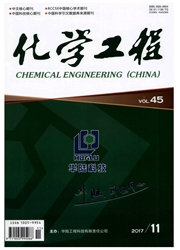

 中文摘要:
中文摘要:
以萘磺酸钠甲醛缩合物、聚羧酸钠、木质素磺酸钠和1种含有木质素磺酸盐的工业废料作为分散剂,考察了2种石油焦的成浆性能。结果表明:2种石油焦的成浆性能相近,黏度为1 000 mPa.s时,与4种分散剂的成浆质量分数均在69%左右;水焦浆多为胀塑性流体,且稳定性较差,24 h内均出现硬沉淀;加入含有聚丙烯酰胺的工业废料作为稳定剂后,水焦浆全部转为假塑性流体,出现硬沉淀的时间超过72 h,但黏度有所提高,导致石油焦的成浆质量分数下降到64%左右。石油焦较低的内在含水质量分数和强疏水性是决定石油焦的成浆质量分数、稳定性和流变性的首要因素。
 英文摘要:
英文摘要:
The slurryability of two petroleum cokes was investigated with 4 dispersants: naphthalene sulfonate sodium formaldehyde condensate,sodium polycarboxylate,sodium lignosulphonate and an industry waste comprising of lignosulphonate.Results show that two cokes have similar mass fraction of slurryability and can be loaded up to about 69% in 1 000 mPa·s.Almost all coke-water slurries exhibit dilatant behavior.The stability of coke-water slurries is not so good and that sedimentation happens within 24 h.After adding an industry waste comprising of polyacrylamide as stabilizer,the time of sedimentation increases to more than 72 h,and all coke-water slurries convert to pseudo-plastic fluid.While viscosity increasing is accompanied,hereby the coke loading mass fraction decreases to around 64%.Low water mass fraction and strong hydrophobicity of petroleum coke are the primary factors of the loading,stability and rheologic behavior of coke-water slurries.
 同期刊论文项目
同期刊论文项目
 同项目期刊论文
同项目期刊论文
 期刊信息
期刊信息
